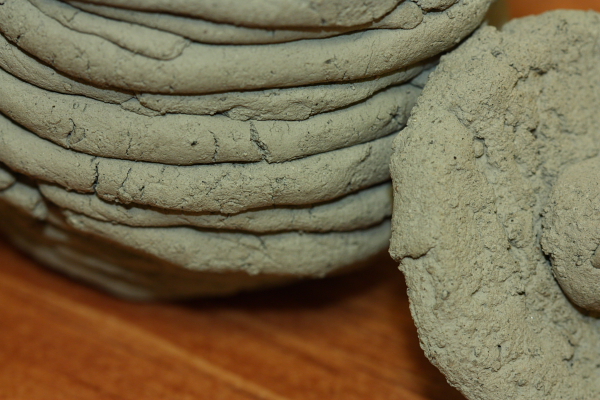Tea: Da Yeh Oolong. Another sample courtesy of Stéphane. His notes on this tea can be viewed
here.
Origin: Taiwan's east coast
Harvest: June 26, 2011
An intriguing tea to say the least, courtesy of its complex origins: an oolong cultivar grown on the Pacific coast of Taiwan with its leaves bitten by insects (in the manner of
Oriental Beauty), then fully oxidized and roasted. The result is a red tea which is tricky to place in terms of characteristics, but all the more enjoyable for it.

The warmed leaves in my gaiwan release an aroma more or less typical of a red tea, somewhere along the lines of ripe fruit. However, much like in the dry leaf, sweet roast undertones and, perplexingly, fresh, almost creamy notes are barely detectable to my nose. Unsure of just how to go about brewing a tea labelled "Red - Da Yeh Oolong", I opt for a hybrid of my standard methods, incorporating very hot water and a high pour without too much force to help the leaves open up while emphasizing their finer characteristics. The brew darkens quickly and in no time at all I'm inhaling deeply from my fragrance cup. The aroma is thick and sweet with a caramel note that endures in the bottom cup for as long as I'm willing to take another whiff. It's clear that the aroma has just begun to open, and expecting a similar impression from the tea itself, I take my first sip. Wow! The liquor gives an impression of fullness far beyond what I'd expect from a first brew during which the twisted leaves have barely started to uncurl.
 |
| In qingbai (left) and white porcelain (right) |
In the second infusion the aroma becomes even more powerful, with a strongly acidic citrus note dominating the complex mix of smells. Trying to make sense of it all leaves me pleasantly lightheaded. The drink embodies the fullness of a red tea combined with a degree of complexity I normally associate with oolongs, perhaps because of this tea's unconventional processing. Typical red tea flavours combine with a dry sweetness and citrus notes, with particular tastes receding and being replaced by an aftertaste which is both sweet and fresh. Though this tea is 100% oxidized, it has somehow managed to retain a subdued, but still distinctly present, feeling of green-ness in the aftertaste. Perhaps this results from the fading of a combination of the sweetness and citrus fruit characteristics noted earlier, but no matter the source it presents a pleasant surprise as I finish the infusion.
I've made a habit of not bothering with fully oxidized teas because I generally find them to be one-noted and possessed of some unpleasant measure of astringency and a healthy dose of bitterness when brewed strongly (or when not brewed very lightly after the first couple of infusions). In my book, a good tea, regardless of genre, ought to be full of texture without having to be brewed to the point of the liquor being sullied by unwanted roughness. From long-jing to pu'erh, the best teas I've tasted have always been pleasantly tactile, but when it comes to red teas I haven't quite been able to strike the right balance, at least not beyond a couple of infusions. Until now.
Even as I write this post I continue to sip this delicious tea with only traces of a not unpleasant dryness. Its endurance and enduring balance have made this tea something quite special, and something I thought was worth sharing.

Much to my regret, this blog has been on an unplanned and unwanted hiatus for the past few months. I've carried on drinking tea (though, with my class schedule, admittedly not as much as I'd like), but have been finding it difficult to muster the motivation to dedicate a full session to the note-taking and photographing followed by the couple of hours of writing and formatting that all go into producing a post for this blog. Producing quality content for this blog is something I take pride in, and for that reason I won't force myself to write or take pictures if I'm just feeling uninspired. My intention has always been to post when I have something I can feel good about publishing, when I feel that by adding my voice to the tea blogosphere I can make a positive contribution. I can't promise new content with the kind of clockwork rhythm of other bloggers, but I promise to publish only content that is true to the spirit of what I'm trying to achieve, so check back; I've got a few things up my sleeve yet.







